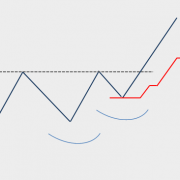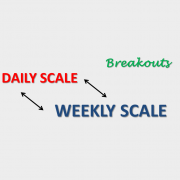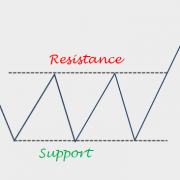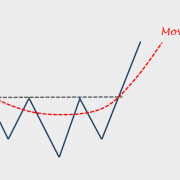Tech Charts Year in Review with Aksel – May 2020
Tech Charts Year in Review – Year Three
- A study on Chart Pattern Reliability with the available sample data over the past year
- Chart patterns with horizontal boundaries have been more reliable compared with breakouts from chart patterns with diagonal boundaries
- Long-term trends impact the number of bullish and bearish chart pattern setups and breakout opportunities
- H&S tops, H&S bottoms and descending triangles have been reliable with breakouts from well-defined horizontal boundaries
- Developing breakout opportunities
- Live Q&A
- When analyzing charts for possible trading opportunities, do you use good liquidity in the market as a trade filter, and what method do you use to determine good liquidity? 1:00:17
- It will be nice if the performance of chart alerts can be tracked in an excel sheet. 1:01:42
- How often do you trade personally? Did you trade all of the patterns summarized in the "Phases of market trends" slide? 1:02:19
- I understand you don't like to use volume, however in technical-analysis-and-stock-market, Richard talks a lot about high volume on upward breakouts, can you explain why you don't use this at least for breakouts? 1:03:15 (LINK: VOLUME AS A CONFIRMING INDICATOR)
- Can you talk about how you place stop losses after entering a position? 1:05:58 (LINKS: Breakout with a pullback – Application of ATR trailing stop-loss and ATR Trailing Stop-Loss – H&S Top)
- Do you ever look at charts adjusting for dividends? 1:06:32
- The statistics on page 7 - does Aksel include failure signals? Such as H&S failure, cup & handle failure, or even asc. des. triangle failures (breaking out of the diagonal line)? 1:07:11 (LINK: Head and Shoulders Top – Failure)
- Why do you ignore wedges? You mentioned this on slide 7; I just wanted to understand your reasons. 1:08:12 (LINK: DIAGONAL BOUNDARIES ARE LESS RELIABLE)
- Slide 9 - Can you repeat your MAs for weekly and daily timeframes? 1:10:22
- Slide 8 - Can you explain how you set your 'pattern failure' level? 1:10:35
- Your charts are mostly weekly - does it mean you disregard shorter timeframe formations? If yes, why? 1:11:35
- Your H&S examples are all with horizontal shoulders - what is your view of inclined H&S? 1:12:18
- Is it true some stocks follow classical patterns better than others over a long period of time? Hence if we find those names, we should follow them long term even if a chart finished this target/negation? 1:13:06
- It would be extremely useful to add to the statistics the average ratio between target and negation levels with respect to the breakout level (sort of profit/loss), per pattern type. 1:14:19
- Have you ever used a pullback strategy? It seems quite popular for some traders, what % of traders do you think are doing this? 1:14:34
- Do you recommend using different stop strategy in terms of the pattern length? i.e., weekly ATR stop if pattern > 12 month, daily ATR stop if the pattern is 4 - 26 weeks. 1:15:24
- Page 20, the symm. triangle, do you usually place negation level at the apex of the triangle because E&M book suggests that's a strong support? 1:16:26
- Could you show us a breakdown of BreakOut success/failure statistics by Exchanges (or Countries, currencies)? It is relevant to those who do not trade signals in all exchanges/countries. 1:16:51
- Are there national markets that demonstrate less emphasis on chart patterns? i.e., heavier % of "fundamental investors"? 1:17:25
- Sometimes, you do not plot the 200MA, is there any particular reason? Besides 200d MA, do you use any other MA? 1:18:19
- Are you ever concerned with how extended the minor advance is in a stock prior to the breakout? FDN for example bounced straight from the lower boundary; do we have to be careful of profit-taking? 1:18:53
- How do you identify the price for horizontal and diagonal boundaries? 1:19:37
- I loved to see the slide of statistics - are there more studies available on the website? (Maybe also compared to different observed timeframes?) 1:19:58
- How do you treat spindles crossing the chart boundary during the weekly or daily chart development? Do you use a lower time frame to negate the false breakouts? 1:20:23
- In terms of timing, what is the time horizon you usually see breakouts playing out? 1:20:58
- How do you balance the initial stop loss positioning between chart pattern boundary and chart negation point to balance the position sizing and the risk as basis points in relation to the market volatility? 1:21:40
- Between log scale and linear scale, which one is better? 1:22:14
- For double tops-bottoms or H&Ss, is there a limit on the percentage (such as 3%) between highs and lows on double tops-bottoms or between right and left shoulders? 1:23:17









